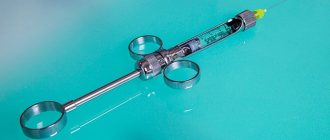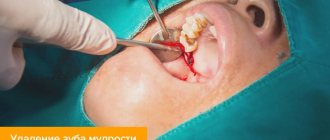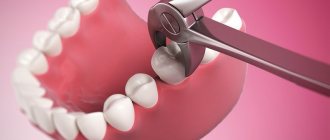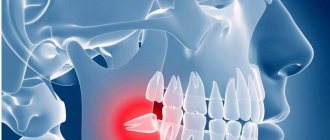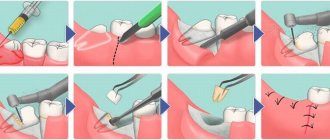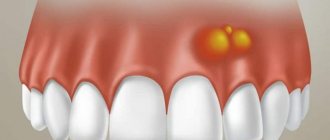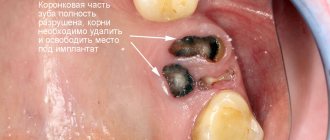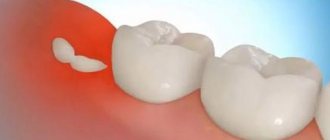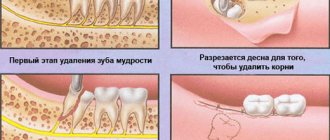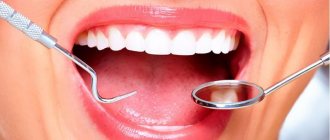If you, like 98% of the world's population, are afraid of visits to the dentist, then tooth extraction under anesthesia is an easy way to carry out the procedure. I fell asleep, woke up - there was no tooth. But is everything so simple, and most importantly, safe?
There are different degrees of drug-induced mind control:
- Light
(sometimes called superficial). The patient is aware of what is happening, makes contact, and follows instructions. Only coordination and reaction slow down, and the patient himself experiences a feeling of relaxation. - Average
. The inhibition of the nervous system is deeper, but consciousness and reflexes are preserved, the patient reacts to specific stimuli. - Deep
. The depression of the central nervous system functions increases, the patient reacts only to strong stimuli. In this case, protective reflexes are preserved, but breathing monitoring is required. - General anesthesia
. Complete loss of consciousness, no reaction to stimuli, breathing support is needed, monitoring of all body functions. At this stage, reflexes do not work, pain receptors are turned off.
The first 3 conditions are sedation
.
The fourth stage is anesthesia
.
Indications for removal
Medical indications can be divided into 4 main groups.
- Crowding of teeth When even one figure eight erupts in the dentition, crowding occurs in 8 cases out of 10, and promises dire consequences. At contact points, i.e. between teeth, hygiene is compromised, and caries forms. Tooth displacement leads to gum recession and bone loss, especially in the anterior region. Pathology leads to the loss of up to 10 teeth by the age of 40.
- Destruction of wisdom teeth The inaccessibility of the eighth teeth to a toothbrush leads to a natural result - first caries develops, then pulpitis and acute pain. Treatment in advanced cases is not far-sighted, because the probability of relapse is too high, and such a tooth is already useless for future hypothetical prosthetics. Removal is more efficient and cheaper.
- Growing difficulties The eruption of eights is not “prepared” by the pioneer milk teeth. That is why the process of their birth is painful and navigationally unpredictable. Wisdom teeth destroy the roots or crowns of the 7th teeth, grow into the cheek, and compress the trigeminal nerve.
- Orthodontic preparation It is almost always impossible to straighten teeth and form a healthy bite using braces or aligners without removing figure eights - there is not enough space for teeth to move. Orthodontic referral is the most common reason for immediate removal.
How to remove – one at a time or “in bulk”? It is important to understand that from a medical point of view, there is absolutely no reason for the patient to remove wisdom teeth one by one.
When is the wound guaranteed to heal after removal of the “8” (wisdom tooth)
The resulting hole “heals” and heals within two to three weeks. The healing process begins with the formation of a blood clot, and epithelium forms on the surface of the wound. After complete healing, weight bearing on the operated area is allowed.
If the wisdom tooth was removed by a surgeon without complications, the wound will heal in about 15-18 days.
If certain problems arose (for example, the tooth had several roots), this period may increase to 25 days.
Only a dentist can evaluate the process of healthy or pathological wound healing. Ideally, it is recommended to visit a specialist’s office 5-7 days after removal of the “eight” to avoid complications.
Should I delete everything at once or one at a time?
Simultaneous removal of all “eighth” teeth at once has a number of pronounced advantages over “multiple” ones. Let's compare! For clarity, we will combine all the pros and cons in a table.
| One by one | All wisdom teeth at once |
| Efficiency When any tooth is removed, the neighboring and antagonist tooth begins to move. We delete one at a time - the displacement occurs 4 times. Increased risk of loose teeth, gum recession, and bone damage | Efficiency Movement in the dentition occurs simultaneously and is quickly “compensated”, i.e. stops and does not progress. Your orthodontist will tell you “Thank you!” |
| Medicines Antibiotics will have to be taken after each removal; this is not obvious at first glance, a very serious obstacle | Medicines Medicines are taken only once, which is especially convenient in the presence of concomitant diseases |
| Stress Obviously, four visits to the doctor, especially for the purpose of removal, are four reasons for unnecessary worries | Stress The operation is performed “in your sleep” under sedation - there is no fear, no pain, no unpleasant memories |
| Time management Call the clinic administrator 4 times and adapt to the surgeon’s schedule, spend 6-8 hours in traffic jams, plus 4-10 hours in the chair | Time management Choose a convenient time only once, go to bed, go home after 3-4 hours, having rested and slept |
| Safety In the “tooth by tooth” format, the temptation to remove it where it is cheaper is sometimes too great. Most complications are the result of removal at the “Anywhere” clinic | Safety Such operations can only be carried out in maxillofacial surgery with a very high level of equipment, qualifications and responsibility. There is absolutely no threat to your life and health here. |
Ordinary dental clinics recommend removing wisdom teeth one at a time due to insufficient equipment , starting with the anesthesiology department, ending with the sterility of the instruments and the operating units themselves, and the unconvincing qualifications of the doctors.
The topic of wisdom teeth removal is shrouded in a dense veil of fears, doubts and concerns that small private clinics willingly support.
What could go wrong
The vast majority of complications are caused by doctor error. The incompetence of an anesthesiologist entails:
- Problems with the respiratory system
. Mucus and blood clots can get into the airways and block them, since during general anesthesia protective reflexes are suppressed. - Problems with the cardiovascular system
. The wrong dosage causes different reactions: a slowdown or acceleration of the heart rate, a drop or increase in blood pressure.
Recovery from anesthesia may be accompanied by nausea, vomiting, and inappropriate behavior. General anesthesia is a serious shock to the body; it should not be considered harmless.
There are fewer risks with sedation
, but they exist too. These are all the same breathing disorders and hemodynamic processes (problems with blood pressure and heart rate).
Myths, or why is deleting all eights at once so scary?
What are the most common concerns that patients have about having all their wisdom teeth removed at once?
This is traumatic.
Multiple removals create an extensive wound surface, secondary infection will certainly occur, large loss of blood will take a long time to heal, etc. and so on.
- Reasons You will truly remember the classic “punitive” removal using a drill, elevators, forceps, as well as a saw and chisel for the rest of your life.
- How to avoid Modern high-class maxillofacial surgery uses only piezosurgical ultrasound devices (PiezoSurgery) . A special “scalpel” affects only hard tissues and automatically turns off upon contact with soft tissues - gums, nerves, blood vessels, etc. Trauma is reduced to zero, and the speed of removal increases by 2 times, there is no blood, the bone around the tooth remains intact and unharmed, and the tooth tissue does not heat up.
- Summary Removal using ultrasound eliminates trauma by 99%.
It hurts.
The anesthesia may not work, and the next day it will be simply impossible to open your mouth, swelling, bruises, cramps occur, eat strictly through a straw, etc.
- Causes of Pain during and after surgery are directly related to removal methods. Traditional “strong” surgery does require increased pain relief at the time of removal and often causes pain in the postoperative period.
- How to avoid Removing wisdom teeth under sedation in a combo protocol with the simultaneous administration of anesthetics 100% eliminates pain during surgery and the formation of microspasms in the jaw muscles, which makes it difficult to open your mouth the next day. Piezosurgery reduces trauma by several orders of magnitude. A proprietary rehabilitation program, including microcurrent and PRP therapy, completely relieves postoperative discomfort, including cosmetic discomfort. Medicines, antibiotics, antihistamines and painkillers must be taken strictly in accordance with the recommendation of the dentist.
- Summary The use of Piezosurgery in conjunction with sedation provides absolute comfort during and after surgery, provided that the doctor's instructions are followed in the postoperative period. For those who are not ready for a moment to change their quality of life after treatment, a proprietary rehabilitation program is available.
This is a long time.
Being in a chair for 2-4 hours without moving with your mouth open is a physically difficult task even for a superman.
- Causes Complex removal of one wisdom tooth often takes 1-2 hours. Horizontal location, incomplete eruption, proximity of the roots to the maxillary sinus or trigeminal nerve, all these features of the growth of the eighth tooth will require additional manipulations and time expenditure by the surgeon.
- How is PiezoSurgery solved? The duration of removal of impacted or dystopic teeth using piezoelectric methods is reduced by at least 2 times. But, nevertheless, the operation is still planned at the rate of 1 tooth = 1 hour. We remove 3 out of 4 teeth in 1 hour, but the last one may take 2 or even 3 hours. These are the statistics. Is there a solution? Yes - sedation. Sedation. Artificial sleep caused by the administration of propofol-based drugs, such as diprivan. In the USA and European countries, surgical treatment in dentistry is carried out while asleep, under sedation. This is the "gold standard". You arrive at the clinic to have your teeth removed at 10 am, the anesthesiologist administers the drug and you fall asleep. Doctors and assistants perform the operation. At 2 o'clock in the afternoon the doctor wakes you up, takes you for a check-up, then drinks tea and you can go home. No pain, no medical smells, no bad memories. Only positive emotions.
There will be complications.
On the upper jaw - perforation of the maxillary sinus, on the lower jaw - the trigeminal nerve will be affected, paresthesia.
- Causes The roots of the upper teeth, starting with “fours” and ending with “eights,” are located in close proximity to the maxillary sinus. In 60% of cases, the roots “lie” directly in the sinus. Rough or hasty removal without diagnosis will lead to the formation of a message between the GP and the oral cavity - food and liquid from the oral cavity begins to enter the sinus. The consequences are, to put it mildly, serious. The lower wisdom teeth are almost always located near the trigeminal nerve. When removed, the nerve is often damaged either during the extraction process or when local anesthesia is administered with a needle. It manifests itself as a feeling of numbness in the lower part of the face, loss of taste.
- How to avoid The choice of institution for surgical intervention should be taken seriously. Removing any teeth “anywhere” is strictly prohibited! Only in maxillofacial surgery is it possible to remove complex teeth with a 100% predictable result. A computed tomography scan in a special ENT mode allows us to determine the position of the tooth roots, including in relation to the maxillary sinus. Based on the image, the surgeon determines the tactics for removing each tooth. 3D tomography of the jaw and sinuses is displayed on the screen in the operating room and is in front of the surgeon’s eyes during the operation, this guarantees error-free manipulations.
Removing wisdom teeth in stage 1 is an ordinary routine event for our surgeons. At the Doctor Levin center, the most complex maxillofacial and ENT operations are performed daily: restoration of jaw bone tissue, bilateral sinus lifting, single-stage implantation, removal of foreign bodies from the maxillary sinus.
My life's goal is to create the best oral and maxillofacial clinic in the world.
Rehabilitation of all teeth at once in 1 visit. In your sleep, without stress, pain and unpleasant memories. Filigree planning and an integrated approach to maintaining the health and quality of life of the patient.
Levin Dmitry Valerievich Chief physician and founder of the Doctor Levin center
Possible complications
Some of the most common negative consequences of general anesthesia include the following:
- increased heart rate;
- tachycardia;
- convulsions;
- increased blood pressure;
- dysfunction of the respiratory system;
- vomiting reflex;
- laryngeal stenosis;
- bronchospasms;
- short-term memory problems.
It should be noted that such reactions occur only in a small number of patients; most feel well after surgery. In our clinics, general anesthesia is not used.
Quality standards of the Doctor Levin center
Surgical operations, including multiple tooth extractions, in our Center are carried out in the LifeTime Warranty format, in strict accordance with the Center’s Unified Quality Standards.
An operation to remove all third molars in one day is possible if the following necessary conditions are met in the clinic : 3D computer diagnostics in ENT mode, a full-fledged anesthesiology department, thorough sanitation of the oral cavity, ultrasound surgical equipment, experienced adult surgeons on staff and professional postoperative service.
How is sedation different from anesthesia?
Sedation
– this is depression (suppression) of consciousness to the level of relaxation. At the same time, all protective reflexes are preserved, for example, a blood clot entering the respiratory tract will cause a coughing attack. Sedation reduces the level of reactions, but does not block pain receptors; local anesthesia is used for this.
Anesthesia
causes complete loss of consciousness, so it requires monitoring of all vital functions. General anesthesia turns off pain receptors; no additional pain relief is needed.
The term “sedation” has not taken root in general use, and simple relaxation is often also called anesthesia. It is worth remembering that tooth extraction under general anesthesia is used extremely rarely, mainly in hospitals. This requires a specially equipped operating room, everything necessary for resuscitation, and a qualified anesthesiologist must carry out the procedure.
Therefore, if you are offered to have a tooth removed under anesthesia, clarify what is meant: anesthesia or sedation.
Diagnostics using a computed tomograph with ENT mode
Accurate diagnosis before extraction is a necessary condition for eliminating complications. The Center uses a Sirona Galileos dental tomograph (Germany).
- an accurate picture of the location of teeth, canals and roots
- ENT mode with the ability to diagnose sinuses
- using a 3D image of the jaw during surgery
The choice of a doctor to remove teeth, especially complex ones, should be taken extremely seriously. Average surgeons usually do not stand on ceremony during the procedure. The result of an operation carried out in a hurry, without proper preparation and adherence to gentle removal measures - bone structures of the jaw broken in pieces, wandering remains of roots, unremoved cysts growing into the maxillary sinus, perforations, fistulas, osteomyelitis and much more. Not to mention the shocking post-operative pain that overtakes the patient after such punitive surgery. Entrust removal to an oral and maxillofacial surgeon. Only the maxillofacial surgeon has enough theoretical and practical skills to perform tooth extraction without complications.
Advantages
- An opportunity to receive complete dental care even for those patients who are allergic to drugs for local anesthesia and have a high threshold for local anesthesia.
- No stress from seeing surgical instruments.
- Calm, high-quality work by a doctor without the risk that the patient’s reactions will complicate the treatment process.
- It is possible to carry out complex manipulations and pull out several teeth at once under anesthesia in one session.
- There is almost no risk of complications, since our clinic uses only certified non-toxic materials for anesthesia with rapid and traceless removal from the body.
Would you like us to call you back?
We know how to treat without pain!
- complete relaxation: you will have no fear of the dentist, pain or treatment,
- complete relief of pain,
- fast recovery,
- pleasant rehabilitation after, since xenon triggers metabolic processes in the body,
- you are relaxed, which means the doctor does his job without being distracted by your emotions.
With us you will stop being afraid of dentists! Individual selection of drugs, the most modern equipment and certified doctors who professionally work with all types of anesthesia.
Enroll now
What treatment can be done under xenon sedation?
- dental treatment: removal of caries, treatment of root canals for pulpitis or periodontitis, removal of cysts and granulomas,
- any surgical operations,
- any treatment or prosthetics in case of panic among doctors,
- periodontal treatment within the framework of Smile Recovery complexes,
- dental implantation, both single and multiple – in this case, a higher concentration of the active substance is used, which allows for a more prolonged effect of the anesthetic, and also, if necessary, to put the patient into a medicated sleep.
Contraindications
Sedation is not anesthesia, which has an extensive list of prohibitions on its use. Its negative impact on the human body is minimal. However, this gentle method of sedation also has a certain number of contraindications:
- individual intolerance, allergies to medications;
- colds, flu, ARVI;
- infectious diseases (tuberculosis, hepatitis);
- certain types of chronic diseases;
- myasthenia gravis;
- mental disorders;
- pregnancy;
- alcoholism, drug addiction.
Pros and cons of sedation in dentistry
The main advantage of treatment, removal or prosthetics of teeth under sedation is that it is much easier and more convenient for the doctor to work with a patient who is in a relaxed state. The patient does not experience negative emotions and a persistent feeling of fear from visiting the doctor’s office. In the future, people will more often visit the dental clinic for preventive purposes.
The procedure also has disadvantages, although there are not many of them. The patient should spend an additional hour in the rest room. The cost remains quite high, which is fully explained by the high price of imported materials, high-quality equipment, as well as the duration of treatment. Initially, you will need to spend time and money on tests and consultation with specialists.
